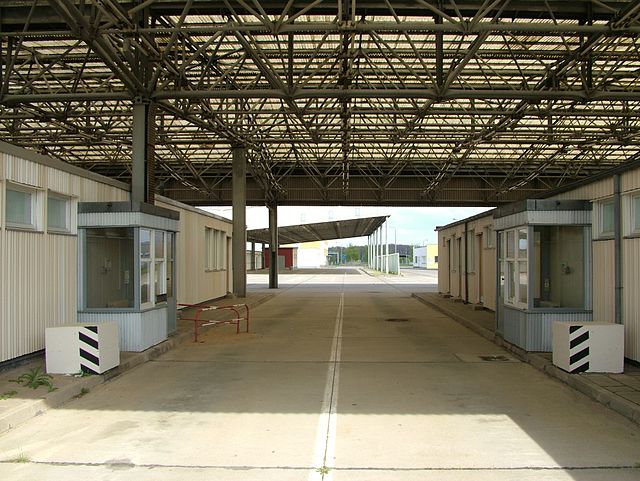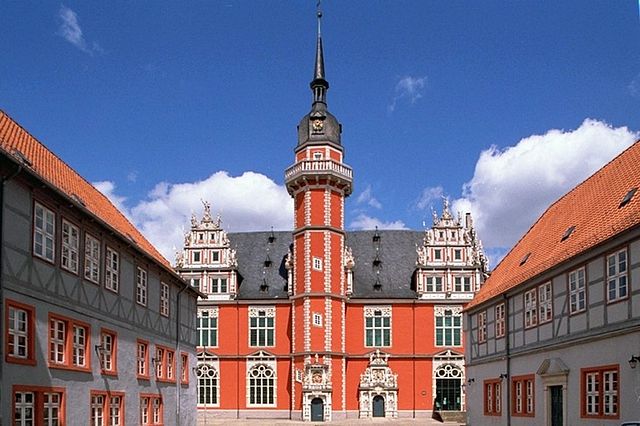Helmstedt–Marienborn border crossing
The Helmstedt–Marienborn border crossing, named Grenzübergangsstelle Marienborn (GÜSt) by the German Democratic Republic (GDR), was the largest and most important border crossing on the Inner German border during the division of Germany. Due to its geographical location, allowing for the shortest land route between West Germany and West Berlin, most transit traffic to and from West Berlin used the Helmstedt-Marienborn crossing. Most travel routes from West Germany to East Germany and Poland also used this crossing. The border crossing existed from 1945 to 1990 and was situated near the East German village of Marienborn at the edge of the Lappwald. The crossing interrupted the Bundesautobahn 2 (A 2) between the junctions Helmstedt-Ost and Ostingersleben.
West German checkpoint in November 1989
Helmstedt–Marienborn from the Soviet Occupation Zone in 1949
Looking down on Helmstedt–Marienborn from the West German side in 1967
Former control point, passport control booths at GDR immigration
Helmstedt is a town on the eastern edge of the German state of Lower Saxony. It is the capital of the District of Helmstedt. The historic university and Hanseatic city conserves an important monumental heritage of Romanesque and Renaissance buildings, as well as numerous timber framed houses. During the German partition the nearby Bundesautobahn 2 was the site of the Helmstedt–Marienborn border crossing, the most important on the former inner German border as starting point of the shortest land route between West Germany and West Berlin.
Juleum Novum, building of the former University of Helmstedt
Mayor's office (built 1904 - 1906)
The "Owl Tower" of the medieval town wall
The Hausmannsturm of Helmstedt








